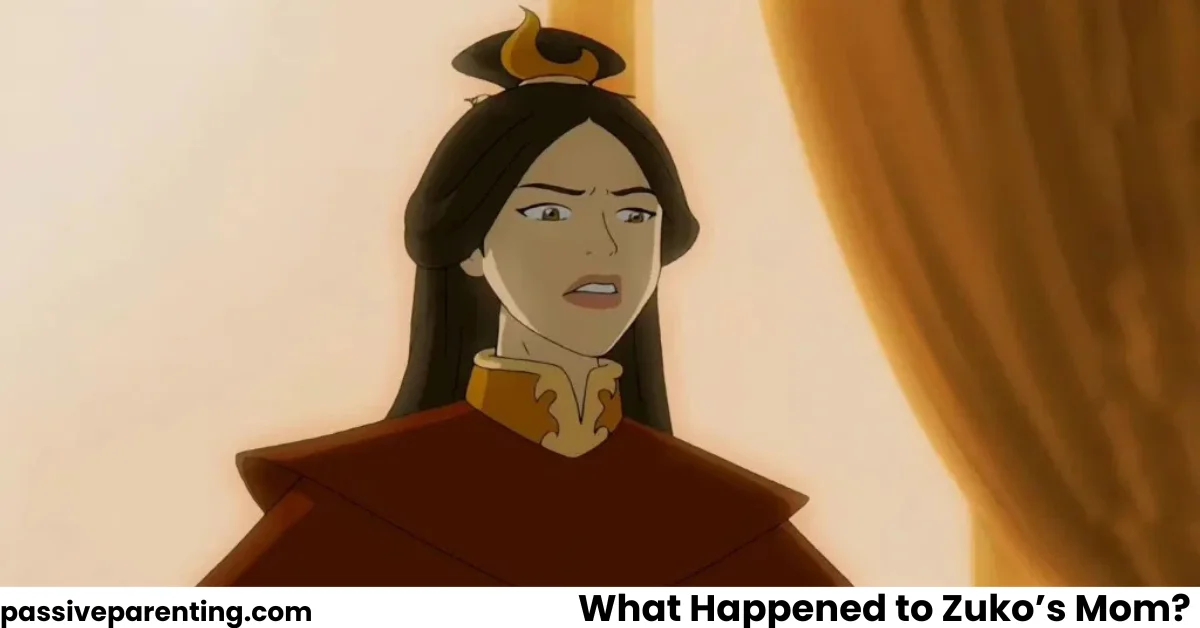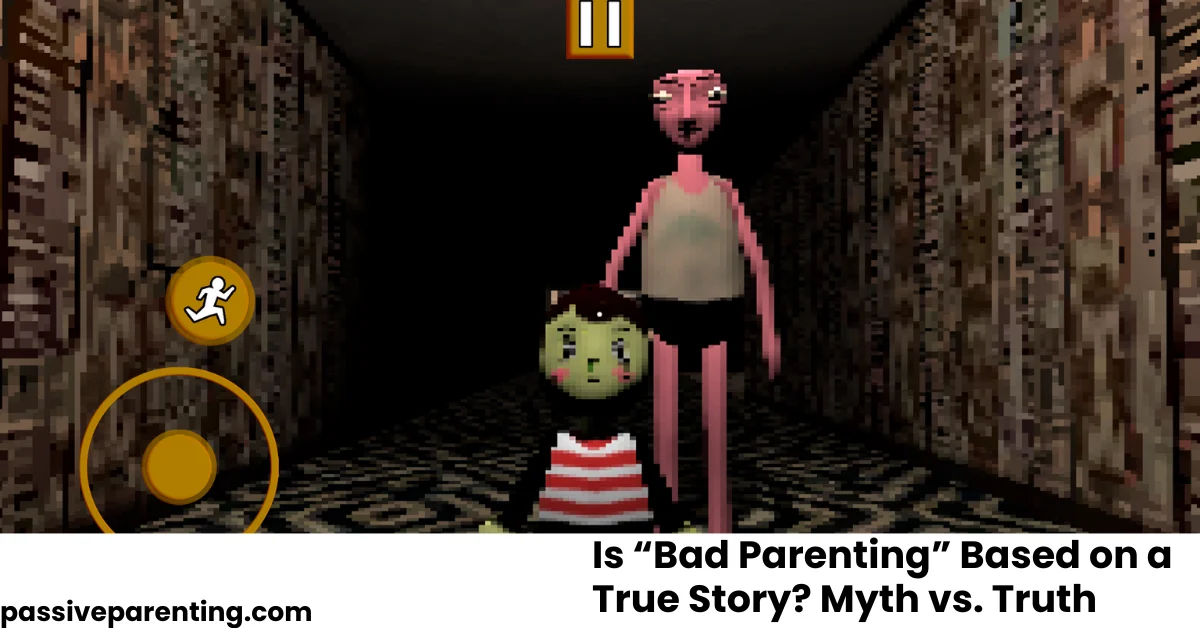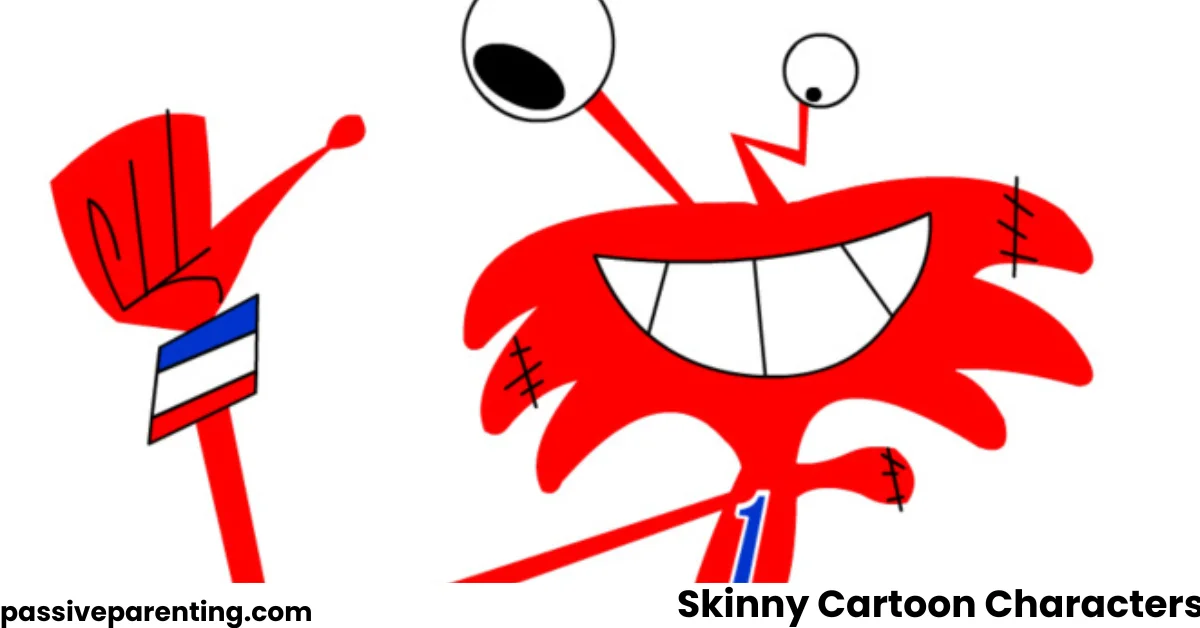In animation and pop culture, character design is everything. A single exaggerated feature, a tiny nose, huge eyes, or a tall forehead can turn an ordinary design into an iconic one. Among these traits, big forehead characters have carved a unique place in storytelling.
Whether it’s the intellectual genius of Jimmy Neutron, the endearing awkwardness of Megamind, or the fierce charm of Sakura Haruno, these characters prove that a large forehead can symbolize much more than just physical proportion. It’s a tool of personality, comedy, and even brilliance.
So, why do artists and filmmakers create big forehead characters? And what do these designs communicate about intelligence, emotion, or identity? Let’s dive deeper into this fascinating artistic choice and explore the most memorable examples across different genres.
Why Big Foreheads Stand Out in Character Design
Every animated character is crafted with intention. According to Character Design Quarterly, animators exaggerate certain features to amplify personality traits that the audience can quickly recognize. A larger forehead often creates a sense of intelligence, curiosity, or youthful energy.
Psychologically, humans associate larger foreheads with high intellect or innocence, traits that often appear in childlike or brainy characters. It’s why you’ll often see young protagonists, inventors, or quirky geniuses drawn with pronounced foreheads.
The design also helps with expressiveness. A big forehead leaves more “emotional space” for animators to work with raising eyebrows, widening eyes, or furrowing brows become visually powerful. It’s not just about looks, it’s about storytelling through shape.
Big Forehead Characters in Cartoons
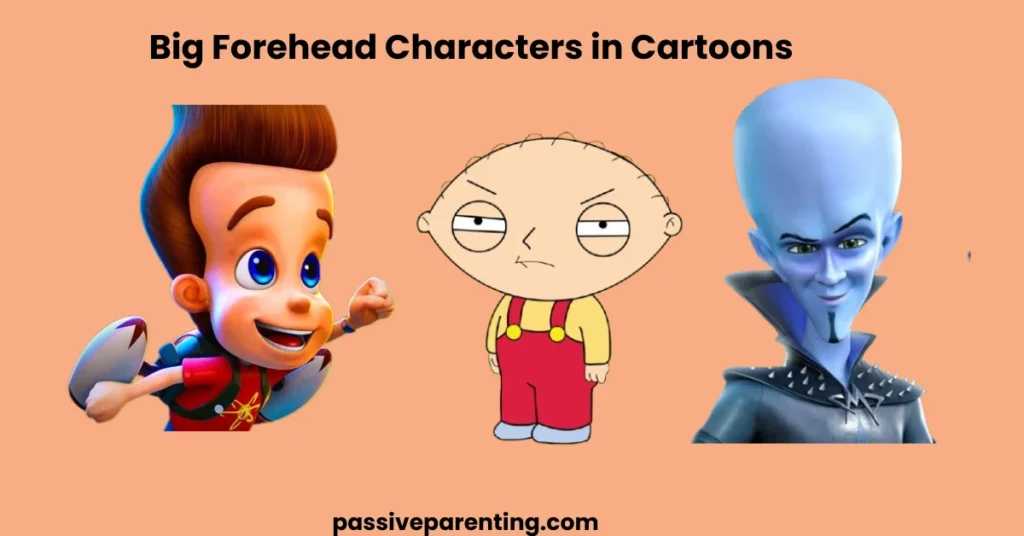
Cartoons have long embraced exaggerated proportions as part of their charm, and big forehead characters are no exception.
One of the most recognizable is Jimmy Neutron, the boy genius with a towering pompadour and a forehead that practically screams “science.” His design perfectly supports his character’s identity, brilliant yet socially awkward, blending brains with humor.
Then there’s Stewie Griffin from Family Guy. His football-shaped head, topped by a high forehead, reinforces his over-the-top intelligence and villainous schemes. Stewie’s forehead acts as visual shorthand for his genius, contrasting hilariously with his baby body and voice.
Another example is Megamind from DreamWorks’ hit movie. His bulbous blue forehead isn’t just for laughs, it represents evolution and intellect, setting him apart from human characters. In design theory, such exaggeration often symbolizes a being “beyond normal human intelligence.”
According to Animation Mentor Blog, these design exaggerations help audiences instantly categorize characters: “Shape tells story; circles for innocence, triangles for danger, and large foreheads often for intellect or eccentricity.”
Big Forehead Characters in Anime
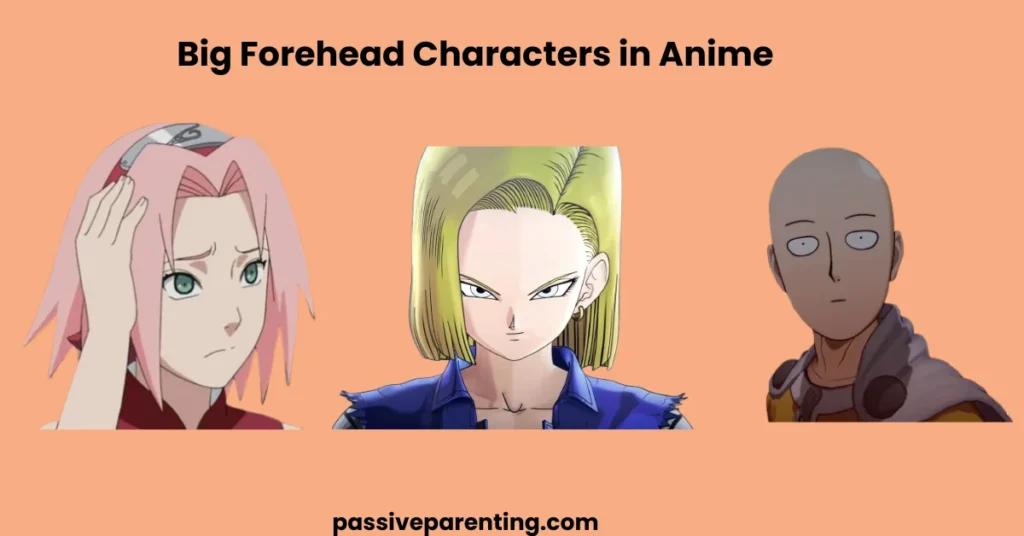
In anime, facial proportions carry deep symbolic meaning. While Western cartoons exaggerate features for humor, anime often uses them to convey personality depth or emotion.
A popular example is Sakura Haruno from Naruto. Fans have long associated her forehead with her early insecurities, but it later becomes a symbol of confidence and growth. Her transformation from shy to strong parallels her acceptance of herself, including her famous “big forehead.”
Android 18 from Dragon Ball Z also features a pronounced forehead that complements her sharp, determined expression. It gives her a sleek, futuristic look that fits her android identity.
Meanwhile, Saitama from One Punch Man, bald and expressive, embodies the minimalist power of simplicity. Though not a “forehead character” in the traditional sense, his blank, exaggerated head shape serves the same purpose: humor, emotion, and recognition.
According to Anime News Network, anime artists intentionally balance facial proportions to emphasize personality traits. A “longer forehead” or “wider face space” draws attention to the eyes and expressions, helping convey subtle emotion in still frames.
Movie and TV Characters with Big Foreheads
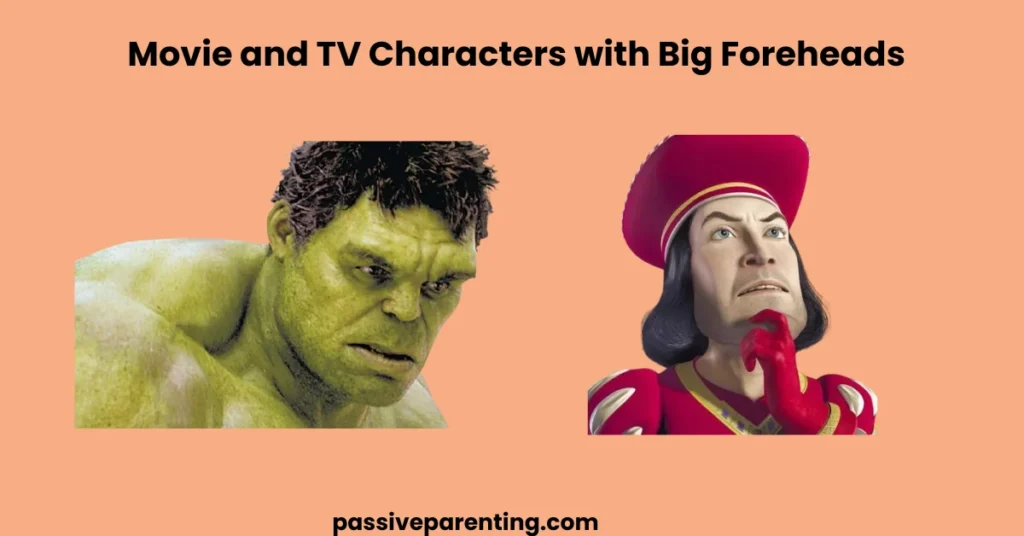
It’s not just cartoons and anime , live-action and CGI films also feature memorable big forehead characters who dominate pop culture.
The 2010 film Megamind remains a standout, where the title character’s massive head directly mirrors his intelligence. The design choice was intentional, according to DreamWorks’ art directors, they wanted his head to “feel slightly too large for his body” to emphasize both his brainpower and comedic awkwardness.
Another example is The Leader (Samuel Sterns) in Marvel’s The Incredible Hulk. His expanding forehead symbolizes his evolution from man to super-intellect, reflecting the age-old link between “mind” and “massive cranium.”
Even in comedy, Lord Farquaad from Shrek stands out. His tall, square head and high hairline exaggerate his vanity and self-importance, making his design inherently funny.
Across genres, from sci-fi to fantasy to satire, directors have used this single feature to blend humor with meaning, a large forehead becomes both visual gag and psychological cue.
Symbolism Behind Big Foreheads in Media
The symbolism of big foreheads goes beyond design aesthetics. Throughout history and art, physical exaggerations often represent intellect, power, or otherworldly qualities.
In art theory, the forehead has been tied to “mind and vision”, the part of the body associated with higher thinking. Characters with larger foreheads subconsciously communicate dominance of intellect over physicality.
Psychology Today notes that audiences naturally make snap judgments about intelligence based on facial structure , even though it’s not biologically accurate. Creators use this perception to shape character identity instantly.
For comedic characters, a big forehead may act as parody, amplifying intellect to absurd levels. For heroes, it can symbolize clarity, focus, or mental strength. For villains, it often signals manipulative genius, as seen in characters like Brain from Pinky and the Brain.
Thus, this single design trait manages to reflect intellect, emotion, and identity all at once, a masterstroke of visual storytelling.
The Internet and Meme Culture
No discussion of big forehead characters would be complete without touching on meme culture.
The internet has embraced this trope humorously, with fan edits and viral posts celebrating “big forehead energy.” Social media communities on Reddit and TikTok share lists of “best big forehead characters”, sometimes as affectionate jokes, other times as pure admiration.
The trend extends to fan art, where exaggerated foreheads are turned into style statements. Some artists even reinterpret popular characters like Elsa from Frozen or Vegeta from Dragon Ball Z with comically enlarged heads, emphasizing how iconic such features have become.
According to Know Your Meme, exaggerating foreheads in digital humor has become a shorthand for “intellectual chaos”, the idea that someone is “so smart it’s visible.” It’s a playful cultural nod to the same symbolism animators have used for decades.
Representation and Design Evolution
As animation and media evolve, so do character aesthetics. Modern design embraces diverse looks, proving that beauty and memorability aren’t tied to symmetry or convention.
Big forehead characters, once seen as odd or comic, are now often portrayed as strong, confident, and distinctive. This evolution mirrors a broader cultural shift, individuality and uniqueness are celebrated, not hidden.
Take Pixar’s Edna Mode, though not a traditional “big forehead character,” her exaggerated proportions symbolize creative brilliance. Similarly, Brainy Smurf or Velma Dinkley embody intelligence as a positive, defining trait rather than a joke.
According to Screen Rant, newer animation trends are leaning toward “humanized exaggeration”, keeping stylized traits like large foreheads but pairing them with realistic textures or emotional nuance to maintain charm without mockery.
The Artistic Challenge: Balancing Humor and Humanity
Creating a big forehead character requires more than enlarging one feature. Skilled designers balance humor and relatability, ensuring the character doesn’t feel too alien or unsettling.
Pixar and DreamWorks often use the “rule of thirds” in facial proportioning, extending the forehead slightly while keeping the eyes large and expressive. This creates a sense of familiarity even within exaggeration.
As Animation World Network explains, design exaggeration is about focus: “The viewer’s eye goes where the animator directs it.” A big forehead directs attention to the face, eyes, and expressions, perfect for storytelling where emotion is key.
Thus, from Megamind’s enormous blue cranium to Stewie’s tiny but commanding noggin, each example reflects not just humor but precision design.
Why We Remember Big Forehead Characters
What makes big forehead characters so memorable isn’t just their looks, it’s what those looks convey. They’re instantly recognizable, often hilarious, and deeply expressive.
In storytelling, recognition equals connection. A distinct silhouette or memorable design feature helps audiences bond with characters faster. Big foreheads make these designs unique, creating instant familiarity across cultures and generations.
Moreover, these characters embody the blend of intellect, oddity, and charm that defines modern animation. They challenge beauty standards while highlighting personality, proof that design quirks can become trademarks of greatness.
Final Thoughts
From cartoons to cinema to anime, big forehead characters prove that unique features can define icons. They’re funny, smart, expressive, and unforgettable whether as geniuses, villains, or heroes.
Their designs speak a universal language: intelligence, humor, and individuality. Over the decades, artists have transformed a simple exaggeration into an art form, one that tells us that creativity often lies in the quirks we can’t ignore.
So, the next time you see a character with a noticeably high forehead, remember, it’s not just a design choice. It’s a statement of brilliance, originality, and storytelling genius.

